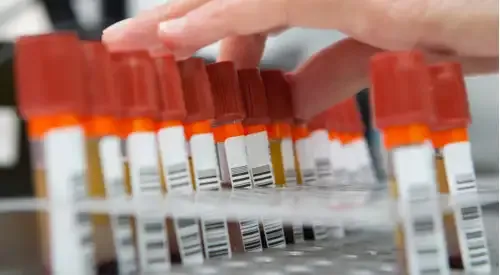Erythema infectiosum
"After 1-3 weeks, erythema spontaneously subsides without desquamation, although flare-ups can occur due to emotional stress, physical exercise and heat".

Erythema infectiosum is defined by the appearance of a slight exanthema (diffuse macular redness in the skin), very common in the pediatric age.
It occurs in the form of epidemic outbreaks during the school period, affecting boys and girls alike.
It also occurs in adolescence and adulthood, less frequently.
Erythema infectiosum has a great similarity with measles, rubella, other viral infections and drug reactions.
Juvenile rheumatoid arthritis and lupus erythematosus are the main diseases to be ruled out in older children.

What are the symptoms of fifth disease?
- Erythema (skin redness).
- Joint pain and inflammation: these are very common in adults and older adolescents, with a greater frequency in women. It mainly affects the large joints (wrists, hands, knees and ankles).
- Transient anaemic and immunocytopenic crises: a sudden drop in the levels of blood and immune cells in blood plasma, with the consequent anaemia and tendency to suffer serious infections due to the loss of defences in the body. It occurs in immunosuppressed subjects or with chronic hemolytic diseases.
- Generalized edema: in the fetus.
The most common symptoms are:
- Reddening of the cheeks.
- Exanthema in trunk and extremities.
- General malaise.
- Pain and joint inflammation.
Do you have any of these symptoms?
You may have an erythema infection
What are the causes of erythema infectiosum?
Erythema infectiosum is a viral disease produced by Parvovirus B 19.
The main target of this virus is erythropoietic cells (red blood cell precursors), which belong to the human bone marrow.
The virus destroys these cells when they are in the phase of division and thus alters their synthesis. Therefore, it decreases the amount of blood cells in the plasma of the infected individual.
At-risk patients
In individuals with chronic hemolytic disease, infection can lead to a temporary interruption in red blood cell formation and a sharp drop in serum hemoglobin, often requiring transfusions.
In individuals with an impaired immune system (leukemias treated with chemotherapy, AIDS), there is a great risk of having a chronic infection, with a notable decrease in blood and immune cells due to insufficient production in the bone marrow.
The fetal infection by this virus has come to produce, in some cases, intrauterine death in the context of a maternal primoinfection.
How is erythema infectious diagnosed?

The diagnosis of erythema infectiosum is made by clinical observation of the exanthema, excluding other processes.
In the laboratory, there are no reliable data for the diagnosis of this virus, although, as reference, the levels of antibodies in the blood are measured.
Another effective method for diagnosis is the use of methods to detect viral particles or parvovirus B19 DNA.
Erythema infectiosum has a great similarity with measles, rubella, other viral infections and drug reactions.
Juvenile rheumatoid arthritis and lupus erythematosus are the main diseases to be ruled out in older children.
How is erythema infectious treated?
There is no specific antiviral treatment. In most cases, no treatment is necessary. If the fever is high or the child complains of joint pain or painful edema, analgesics and/or nonsteroidal anti-inflammatory drugs may be given.
IVIG (intravenous immunoglobulin) has been successful in treating patients who are immunosuppressed or have AIDS, although only to provide a temporary remission of associated anemia and spinal cord impairment. Hydrops fetalis (generalized edema in the fetus) has also been successfully treated through intrauterine transfusions.
Children with parvovirus B12-induced erythrocyte aplasia (impaired red blood cell production) will require transfusions and supportive measures until the blood status has stabilized.
No vaccine against this virus is available.
Where do we treat it?
IN NAVARRE AND MADRID
The Department of Pediatrics
of the Clínica Universidad de Navarra
All our specialists work exclusively and, in addition, since we have all the technology in the same center, we offer the performance of tests and diagnosis in less than 72 hours.
We have a team of highly qualified professionals to attend the different specialized units: Oncopediatrics, Neuropediatrics, Endocrinopediatrics, Neonatology, etc.
Organized in specialized units
- Neonatology Area.
- Pediatric Endocrinology.
- Pediatric Cardiology.
- Pediatric Neuropediatrics.
- Digestive and pediatric nutrition.
- General and preventive pediatrics.
- Pediatric Pneumology.

Why at the Clinica?
- Comprehensive care of the child.
- Professionals who are experts in the different areas for a better diagnosis and treatment.
- Equipped with the latest technology for newborn care.
























